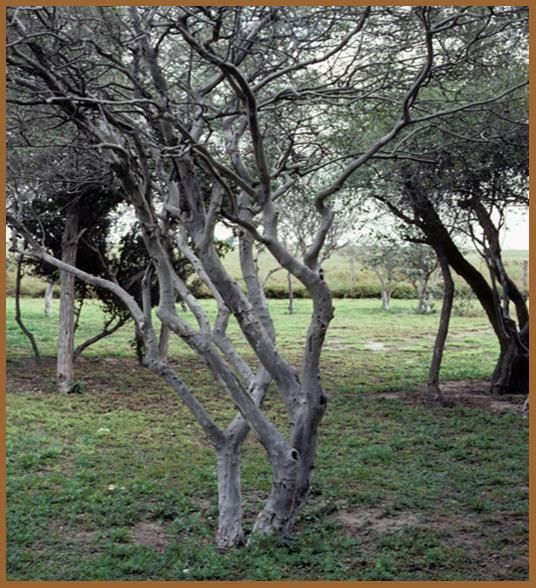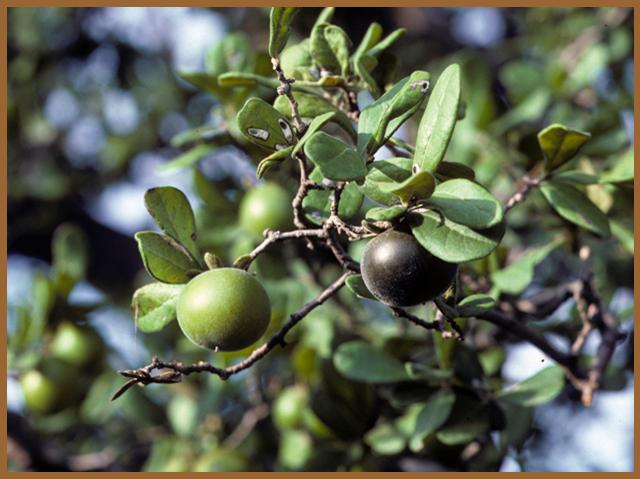Guide to SA Natural Areas & Greenway Trails
M: TEXAS PERSIMMON (Diospyros texana)

LBJ Wildflower Center NPIN 22225 by Sally & Andy Wasowski
Alamo Area Master Naturalist Jessica Leslie is the author of this piece.
SEMI-EVERGREEN -- DISTINCTIVE, SMOOTH, GRAY BARK
The Texas Persimmon is a semi-evergreen shrub or small tree growing to as much as fifteen feet. It is found in dry, rocky areas of central, west and south Texas. The most distinctive trait of the persimmon is the very smooth, gray bark of its trunk. Can you identify literally dozens of Texas Persimmon from where you are standing? It has simple, alternate, one to two-inch long, small, dark green, oval-shaped leaves with smooth edges that are slightly rolled under. The leaves are somewhat leathery on top and fuzzy underneath.
DIOECIOUS (having male & female reproductive organs on separate plants)
The small, cream-colored, bell-shaped flowers occur in the spring and are very aromatic. The female tree produces a round, one-inch fruit that starts out green but ripens to black by late July to September. The skin is bitter and should be removed before use. This tasty fruit is used to make puddings, jellies and even wine. Some cook it with breads and muffins. Is there a female Texas Persimmon nearby? If not, look for one as you complete the walk.
PROVIDES WILDLIFE FOOD & COVER
But it is not only humans who enjoy the fruit. The Texas Persimmon is a valuable wildlife plant, providing food for many species of animals as well as cover. Birds nest and perch in the tree and eat its fruit. Numerous mammals also feast on the fruit, and deer and goats browse the leaves. Its flowers are also a source of nectar for bees.
BEAUTIFUL LANDSCAPE TREE
Other uses have been found for this important tree. The hard, black heartwood is used for making furniture, piano keys and tool handles. Native Americans used concentrated juices from the fruit to dye animal hides. Because of its low water needs and tolerance for both sun and shade, people use the tree as an ornamental in landscapes. Can you see the aesthetic quality in the smooth, gray bark of the trunk and branches of the Texas Persimmon tree, particularly in multi-tree mottes? Perhaps next time you are looking for a shrub or small tree for your yard, you will see the benefits of planting the native Texas Persimmon.
LBJ Wildflower Center NPIN 22227 by Sally & Andy Wasowski
